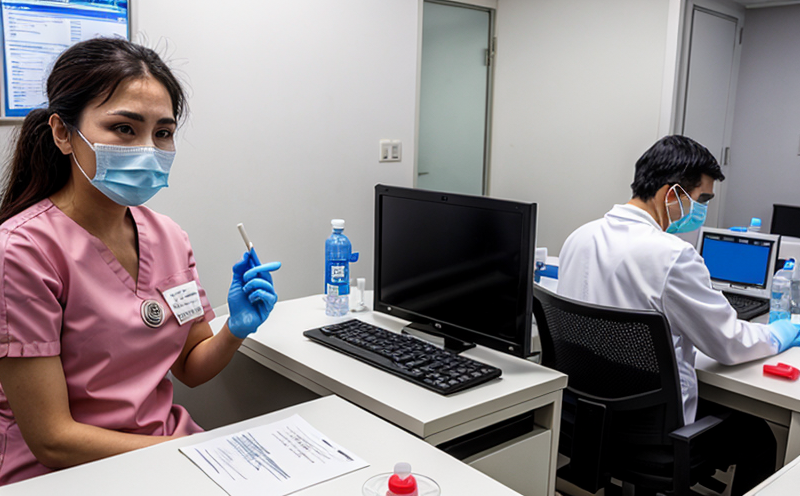Equine Viral Arteritis Virus Serological Testing
In the realm of equine health and welfare, understanding the presence and prevalence of infectious agents is paramount. Equine Viral Arteritis (EVA) virus serological testing plays a critical role in diagnosing and managing this potentially devastating disease within horse populations. EVA is a significant concern for both racehorses and breeding stock as it can lead to reproductive failures, including fetal loss and premature foaling.
The primary goal of this test is to detect the presence of antibodies against the EVA virus in equine sera. This serological approach provides valuable insights into an animal's immune response to past or current infection, which is essential for identifying carrier animals and preventing disease spread within breeding herds. Carrier horses can remain asymptomatic but still pose a risk of transmitting the virus through sexual contact.
The EVA serological test typically involves the use of enzyme-linked immunosorbent assay (ELISA) technology, a widely accepted method in diagnostic virology due to its high sensitivity and specificity. The assay targets specific viral antigens that stimulate an immune response in infected horses. This allows for accurate detection even when only low levels of antibodies are present.
The testing process begins with the collection of blood samples from the equine subjects. Proper specimen preparation is crucial, as it directly impacts the accuracy and reliability of the test results. Blood should be collected into EDTA-containing tubes to prevent clotting and ensure that serum can be separated for analysis. Once the sample is obtained, it must be processed promptly to avoid any degradation of the target antigens.
The assay itself involves several steps: first, the sera are incubated with immobilized viral antigens on a solid phase plate. Following this, enzyme-labeled antibodies specific to EVA antibodies are added. These antibodies bind to the antigen-bound serum antibodies if they are present. Finally, substrate is added to produce a color change that can be measured spectrophotometrically. The intensity of this coloration corresponds directly to the level of antibodies in the sample.
Results from serological tests should be interpreted carefully given their indirect nature; positive results indicate past or current infection but do not distinguish between active and resolved infections. Negative results suggest that the animal has not been exposed to EVA, although it is important to note this does not rule out subclinical infections.
The use of EVA serological testing supports robust management strategies aimed at minimizing the spread of equine viral arteritis within breeding herds. By identifying carriers early, breeders can implement appropriate measures such as culling or isolation protocols to protect future foals from potential complications associated with this virus.
Applied Standards
The EVA serological test adheres strictly to international standards that ensure its accuracy and reliability. These include ISO 15189, which provides requirements for quality management systems in the field of medical laboratories, ensuring high standards of performance and patient care.
Another key standard is EN ISO/IEC 17025:2017, which sets out the general requirements for the competence of testing and calibration laboratories. Compliance with these standards guarantees that laboratory practices meet stringent criteria regarding precision, accuracy, repeatability, and reproducibility.
The World Organisation for Animal Health (OIE) also provides guidelines on diagnostic tests used in veterinary medicine. Their recommendations ensure that EVA serological tests are effective tools for disease surveillance and control programs worldwide.
Why Choose This Test
Selecting the right diagnostic tool is crucial for effective management of equine health issues. The EVA serological test offers several advantages over other methods:
- Non-Invasive Sampling: Unlike virus isolation techniques or PCR tests that require more invasive procedures, blood sampling allows for minimal stress on the horse.
- Cost-Effective: Serological testing is generally less expensive compared to molecular diagnostic methods like RT-qPCR.
- Rapid Results: The assay provides results within a few hours, enabling prompt action against identified risks.
- Comprehensive Analysis: It can detect antibodies against both the European and African strains of EVA virus.
The simplicity and efficiency of the test make it an ideal choice for large-scale monitoring programs in breeding herds. Regular testing ensures that only non-carrier animals are used for breeding, thereby reducing the risk of disease transmission to future generations.
Competitive Advantage and Market Impact
In a competitive market where equine health is increasingly valued, adopting advanced diagnostic tools like EVA serological testing can provide significant advantages. Laboratories offering this service demonstrate their commitment to excellence in animal welfare by providing accurate, reliable results that contribute to better overall herd health.
By incorporating EVA serological tests into routine protocols, breeders and racing associations gain the ability to make informed decisions about which animals are suitable for breeding or competition. This proactive approach not only enhances the reputation of these organizations but also fosters trust among clients who rely on such services.
The demand for accurate diagnostics in veterinary medicine continues to grow as awareness around animal health issues increases. Offering comprehensive EVA testing services positions a laboratory at the forefront of equine healthcare, making it an attractive choice for both established and emerging players in the industry.





